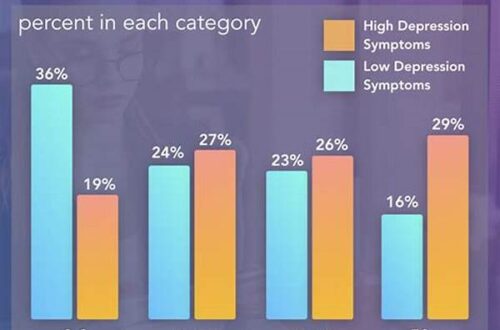In an increasingly interconnected world, the transfer of data across borders is an indispensable aspect of global commerce and communication. However, this process is fraught with challenges related to privacy, security, and regulatory compliance. The importance of protecting cross-border data transfers cannot be overstated, as it ensures that personal and sensitive information is safeguarded against unauthorized access and misuse. As businesses expand their operations internationally, the need for robust frameworks to manage these data flows becomes critical, calling for stringent measures to protect privacy and maintain trust in global markets.
Understanding the Need for Protection
Protecting cross-border data transfers is essential due to the varied data protection laws and regulations across different jurisdictions. Disparities in these laws create complexities that could lead to legal vulnerabilities for organizations engaging in international business. It is crucial for businesses to recognize and adapt to these regulations to ensure compliance and protect their reputational integrity. Furthermore, the growing threat of cybercrimes necessitates an enhanced focus on safeguarding data as it traverses international borders. By implementing comprehensive data protection strategies, businesses can mitigate risks and build a resilient foundation for sustainable operations.
The ability to securely transfer data across borders also supports economic growth and fosters innovation. However, it requires a concerted effort from both private entities and regulatory bodies to establish a secure and law-abiding digital ecosystem. Initiatives such as the General Data Protection Regulation (GDPR) and the Asia-Pacific Economic Cooperation (APEC) Privacy Framework exemplify collaborative approaches to harmonizing data protection standards globally. These efforts underscore the importance of protecting cross-border data transfers, ensuring that businesses and consumers alike can engage confidently in the global arena.
Key Considerations for Businesses
The process of protecting cross-border data transfers involves several key considerations:
1. Compliance with Local Laws: Achieving compliance requires organizations to understand and adhere to the data protection legislation of each jurisdiction involved in the data transfer. This varies widely around the globe.
2. Data Minimization and Encryption: To protect data adequately, businesses should focus on collecting only essential data and employing encryption to secure it during the transfer process.
3. Contracts and Agreements: Establish clear and enforceable contracts to articulate responsibilities and liabilities regarding data protection between transferring and receiving parties.
4. Risk Assessment: Conduct comprehensive risk assessments to identify potential vulnerabilities and create strategies to mitigate identified risks in data transfers.
5. Continuity and Monitoring: Maintain ongoing monitoring and evaluation processes to ensure compliance evolves alongside regulatory changes and emerging threats, ensuring the protection of cross-border data transfers.
International Regulatory Frameworks
Protecting cross-border data transfers is heavily influenced by international regulatory frameworks that help create uniformity across various regions. These frameworks aim to bridge discrepancies between diverse national laws, thereby facilitating smoother data exchanges. The European Union’s GDPR stands as a pivotal regulation, setting high data protection standards and compliance requirements for any entity handling the data of EU citizens. Its influence has reached global paradigms, prompting other jurisdictions to elevate their data protection mechanisms.
Similarly, the APEC Privacy Framework works to align privacy policies among member economies, providing a basis upon which cross-border privacy rules can be built. This initiative fosters cooperation and aims for a balance between protecting personal information and facilitating the free flow of data necessary for economic prosperity. By advocating for robust privacy protection and encouraging accountability from data-handling entities, the framework plays a crucial role in protecting cross-border data transfers.
Challenges in Implementation
Despite the presence of international frameworks, protecting cross-border data transfers presents several implementation challenges. Navigating different legal and cultural landscapes can be daunting, with organizations needing to balance compliance requirements against operational needs. Moreover, the rapid pace of technological advancements sometimes outstrips the ability of regulations to adapt swiftly. This can create gaps in protection, especially as new threats emerge.
Another challenge lies in the awareness and expertise required to handle complex data protection strategies. Companies must invest in their workforce, equipping employees with the skills and knowledge necessary to implement and oversee effective data protection measures. Finally, establishing trust among stakeholders is key for successful cross-border data transfers, requiring ongoing dialogue and collaboration to address security concerns and align expectations.
Technological Solutions
Technological advancements play an instrumental role in protecting cross-border data transfers by providing innovative solutions such as advanced encryption, secure data-sharing platforms, and automated compliance tools. Encryption technologies serve as a frontline defense, ensuring that data remains confidential and tamper-proof during transit. Similarly, secure data-sharing platforms facilitate safe exchanges by allowing only authenticated users to access sensitive information.
Automated compliance tools aid organizations in meeting regulatory requirements efficiently, reducing the risk of human error and ensuring that data handling practices conform to the latest legal standards. By leveraging these technological solutions, businesses not only enhance their data protection capabilities but also streamline processes that are vital for thriving in a competitive global market environment.
The Role of Stakeholders
Stakeholders play a crucial role in protecting cross-border data transfers. Governments, regulatory bodies, businesses, and consumers all share responsibilities in safeguarding data integrity and privacy. Governments are tasked with crafting comprehensive and adaptable policies that provide clear guidance for international data handling. Regulatory bodies must enforce these laws with consistency to ensure compliance is universally observed.
Businesses, meanwhile, need to integrate data protection principles into their core strategies, fostering a culture of accountability and transparency. Educating consumers on their rights and the measures in place to protect their information enhances trust and cooperation, encouraging active participation in the data protection ecosystem. Collectively, these stakeholders form a cohesive network that upholds the principles of secure data exchange.
Future Directions
As globalization and digital transformation continue to reshape the landscape of information exchange, the focus on protecting cross-border data transfers will likely expand in importance. Future directions may include the development of globally harmonized legal frameworks that address emerging privacy and security concerns with an emphasis on innovation. Increased cooperation between nations and sectors is vital in achieving these goals, ensuring that data transfers are not only secure but also equitable and mutually beneficial.
Investment in cutting-edge technologies and research will further bolster data protection strategies, providing a robust shield against evolving cyber threats. By cultivating a dynamic, adaptive approach to data protection, stakeholders can create an environment where information flows freely yet securely, empowering greater connectivity and progress.
Conclusion
In conclusion, protecting cross-border data transfers is a multifaceted challenge that demands comprehensive strategies and international cooperation. With the global economy’s increasing reliance on digital information exchange, safeguarding data as it crosses international boundaries is paramount. A combination of regulatory compliance, technological innovation, and stakeholder engagement is essential in establishing a secure data ecosystem.
Ensuring the integrity and privacy of data not only protects individual rights but also fosters trust in global markets, paving the way for economic growth and technological advancement. As we move forward, the focus on protecting cross-border data transfers will remain critical, necessitating continued vigilance and collaboration among all parties involved. Only by prioritizing data protection can the global community thrive in an increasingly interconnected world.





